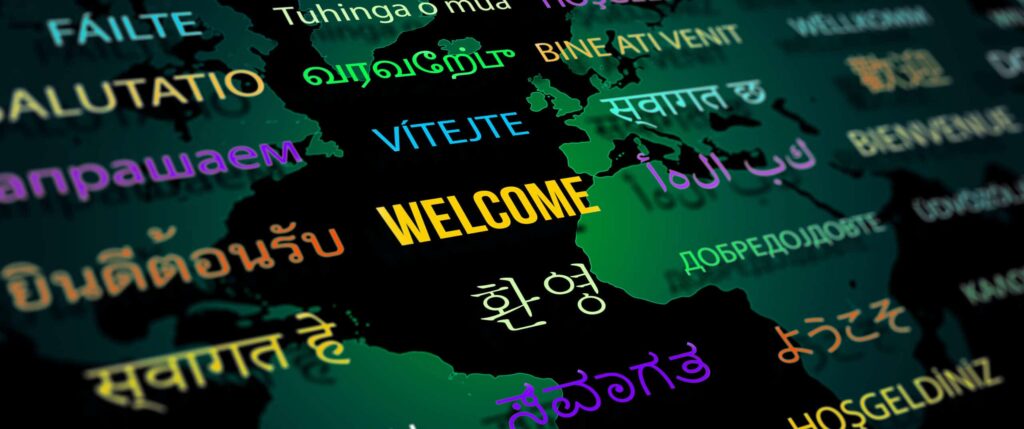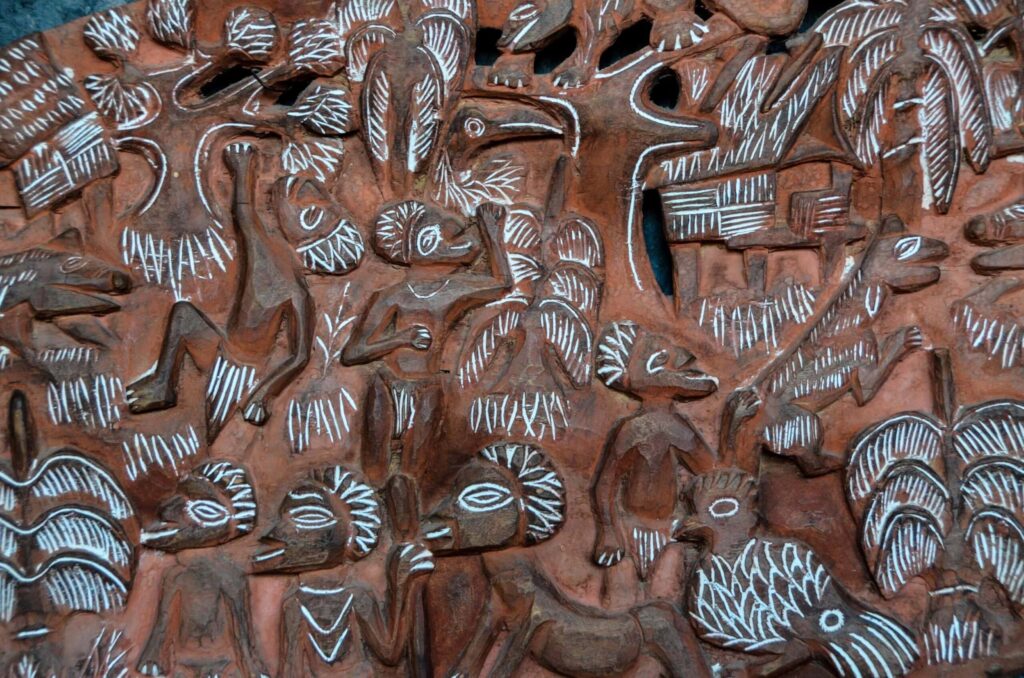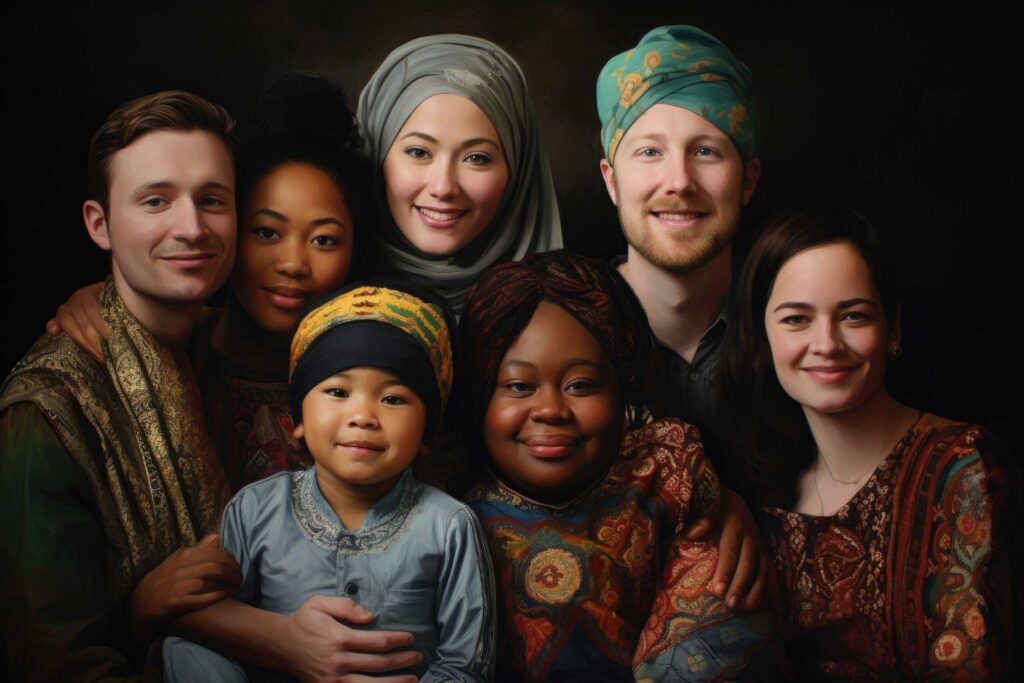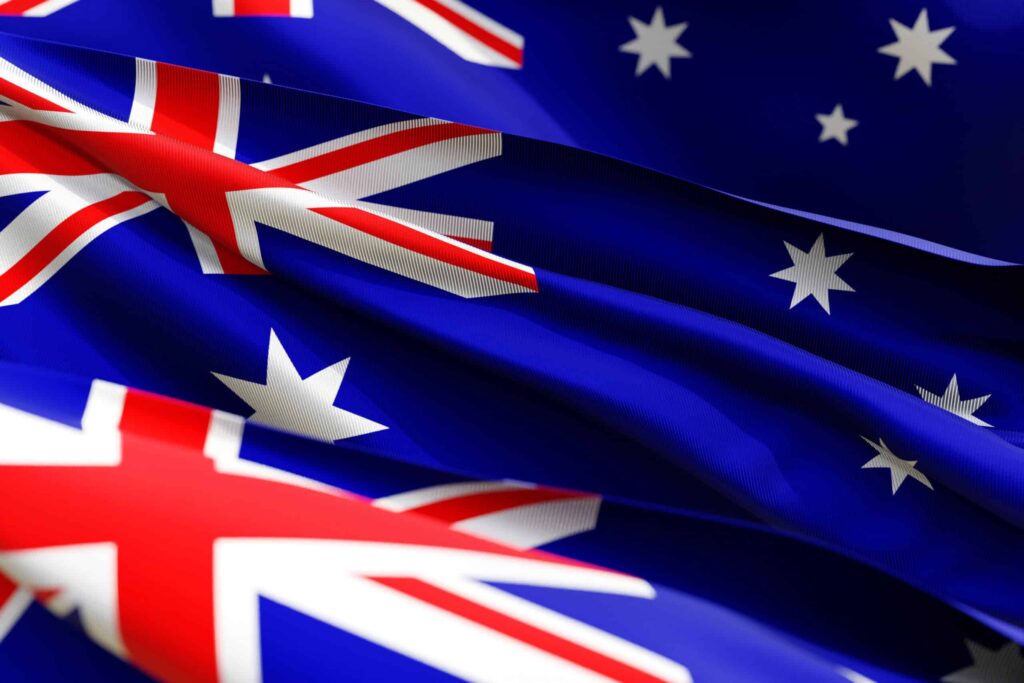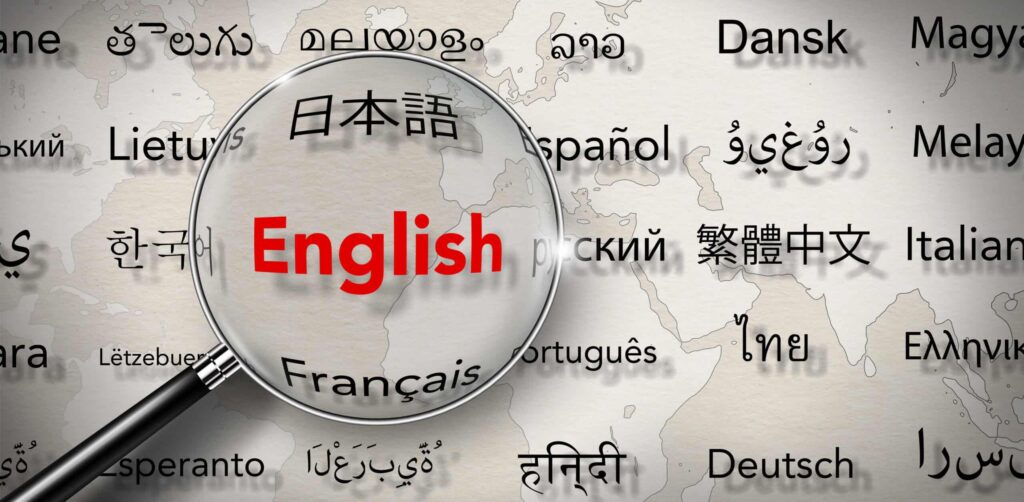Curious about the diverse linguistic landscape Down Under? Australia, known for its stunning landscapes and unique wildlife, is also home to a rich tapestry of languages, multicultural communications, migrants, and immigration. While English stands as the official language, over 300 languages are spoken across the continent, reflecting its multicultural essence. From Indigenous Australian languages like Kriol and Yolngu Matha to Mandarin, Arabic, and Italian brought by immigrants, Australia’s linguistic diversity is a testament to its vibrant cultural heritage of immigration and population.
Exploring the languages spoken in Australia unveils a fascinating blend of tradition and modernity. Whether you’re intrigued by ancient Indigenous dialects or the influence of global migration on contemporary speech patterns, Australia’s linguistic mosaic offers a captivating glimpse into its multicultural identity. Discover the linguistic symphony that resonates across this vast land, spoken language of the population!
Key Takeaways
- Preserve Indigenous Languages: Recognize the importance of Indigenous languages in Australia and support efforts to preserve and revitalize them.
- Encourage Language Diversity: Embrace the richness of Australian languages beyond English, including creole and regional varieties, to promote cultural diversity.
- Support Language Education: Advocate for comprehensive language education in schools and universities to foster multilingualism and intercultural understanding.
- Promote Multilingualism: Encourage individuals to maintain and enhance their proficiency in multiple languages to benefit from cognitive advantages and global opportunities.
- Raise Awareness: Spread awareness about the significance of language diversity in Australia to promote inclusivity and respect for all linguistic communities.
- Embrace and celebrate the diverse spoken language heritage of Australia to strengthen national identity and unity.
Overview of Australian Languages
Top Languages Spoken at Home
Australia, a diverse nation, boasts a rich tapestry of languages spoken at home. English naturally leads as the primary language used by the majority of Australians. However, a significant portion of the population converses in languages other than English within their households.
Increase in Non-English Languages
Recent census reports highlight a notable surge in the prevalence of non-English languages spoken at home across Australia. Mandarin, with its roots in China as the spoken language, has seen a substantial rise in usage, reflecting the growing influence and presence of Chinese communities within the country.
Vietnamese also stands out as one of the prominent non-English languages spoken widely across Australian homes. The influx of Vietnamese immigrants and their subsequent generations has contributed to the language’s widespread use throughout various regions.
Dominance of Mandarin, Vietnamese, and Cantonese
Apart from English, Mandarin, Vietnamese, and Cantonese emerge as the top contenders for the most spoken languages after English in Australia. These languages hold significant sway due to the sizable populations of Chinese and Vietnamese descent residing in different parts of the country.
The prevalence of Mandarin can be attributed to China’s economic growth and Australia’s robust trade relations with the Asian giant. Consequently, Mandarin has become increasingly vital not only for communication within Chinese communities but also for business interactions on an international scale.
Similarly, Vietnamese has established itself as a key language owing to historical migration patterns and ongoing cultural ties between Vietnam and Australia. The language serves as a crucial means for preserving heritage and fostering community cohesion among Vietnamese Australians.
Cantonese, another prevalent language in Australian households, underscores the enduring influence of Hong Kong and Guangdong Province’s diaspora communities. Its significance lies not only in everyday conversations but also in maintaining cultural traditions and familial connections among Cantonese-speaking Australians.
English Dominance in Communication
Decrease in English-Only Speakers
English stands as the dominant language in Australia, shaping the country’s communication landscape. From 2016 to 2021, the proportion of English-only speakers decreased slightly from 72.7% to 72.0%.
This shift underlines a growing trend towards linguistic diversity, reflecting an evolving society where multilingualism is becoming more prevalent. While English remains crucial, this change signifies a broader acceptance and integration of various languages.
Impact on Accessibility and Inclusivity
The presence of multiple languages in Australia fosters greater accessibility and inclusivity across different sectors. By embracing multilingualism, businesses, government agencies, and service providers can cater to a more diverse population.
In sectors like healthcare, education, and customer service, offering information in multiple languages ensures that individuals from varied linguistic backgrounds can fully engage with and benefit from these services. This approach not only enhances user experience but also promotes a sense of belonging and equity within communities.
Advantages of Multilingualism
- Improved Communication: Multilingual environments enable smoother interactions between individuals who speak different languages.
- Cultural Exchange: Embracing multiple languages encourages cultural exchange and understanding among diverse groups.
- Global Competitiveness: Proficiency in multiple languages equips individuals with skills valued in an increasingly interconnected world.
Indigenous Languages and Their Significance
Aboriginal Languages
Aboriginal languages in Australia are incredibly diverse, with over 250 languages spoken before European colonization. These languages are crucial for preserving the rich cultural heritage of Aboriginal communities.
Threat of Extinction
The census data reveals a concerning decline in the number of speakers for many indigenous dialects. The rapid loss of these languages poses a significant threat to Australia’s linguistic diversity.
Importance of Preservation
Preserving and revitalizing indigenous languages is essential to safeguarding the unique identities and histories of Aboriginal communities. Language plays a vital role in passing down traditions and maintaining cultural connections.
- Pros:
- Cultural preservation
- Strengthening community ties
- Cons:
- Limited resources for preservation efforts
- Lack of widespread awareness about the importance of indigenous languages
Creole and Other Hybrid Languages
Creoles
Creoles play a significant role in the linguistic landscape of Australia. These languages are formed through interactions between different cultures, blending elements from various linguistic backgrounds. Communities with diverse ancestral origins often use creole languages as a means of communication.
In Australia, creole languages have evolved over time, incorporating vocabulary and grammatical structures from Indigenous languages, English, and other influences. This unique blend reflects the cultural diversity and historical interactions that have shaped the country’s language dynamics.
Hybrid Languages
Hybrid languages in Australia serve as a testament to the fusion of cultures and the resulting linguistic diversity. These languages emerge when distinct linguistic systems merge, creating a new form of communication that incorporates elements from multiple sources.
The role of hybrid languages goes beyond mere communication; they embody the cultural heritage and identity of communities where they are spoken. By combining features from different linguistic traditions, hybrid languages facilitate intercultural exchange and understanding among people from various backgrounds.
Language Education in Schools and Universities
Importance
Language education in Australian schools and universities plays a crucial role in promoting cultural diversity and fostering global connections. With the country’s rich history of immigration, embracing various languages is essential.
Benefits of Bilingual Education
Bilingual education not only enhances linguistic skills but also boosts cognitive development. It enables students to think critically, problem-solve effectively, and improves their overall academic performance.
Challenges and Opportunities
Implementing language programs in educational institutions comes with its set of challenges and opportunities. While funding and resources may pose obstacles, the benefits of a multilingual society outweigh these hurdles.
- Challenges:
- Limited resources for language education programs.
- Difficulty in finding qualified language teachers.
- Balancing curriculum requirements with language learning demands.
- Opportunities:
- Enhancing students’ employability by equipping them with diverse language skills.
- Strengthening cultural awareness and understanding among students.
- Fostering connections with international partners through language proficiency.
Role of Government
The Australian government plays a pivotal role in supporting language education initiatives. Through strategic policies and funding allocations, the government aims to ensure that students have access to quality language programs at all educational levels.
Industry Demand
In recent years, there has been a growing demand for multilingual professionals across various industries. Employers value candidates who can communicate effectively in multiple languages, enhancing their competitiveness in the global job market.
Regional Language Varieties
Diverse Dialects
Australia boasts a rich tapestry of regional dialects influenced by historical and geographical factors. From the distinctive accent of the Outback to the unique slang of coastal communities, these variations reflect the country’s multicultural heritage.
Cultural Enrichment
The national language may be English, but the presence of various languages spoken across different regions adds depth to Australia’s cultural landscape. Indigenous languages, such as Warlpiri and Yolŋu Matha, coexist with immigrant languages like Italian and Mandarin, creating a vibrant mosaic of linguistic traditions.
Preserving Linguistic Diversity
Embracing and safeguarding these common languages is crucial for preserving Australia’s linguistic heritage. Efforts to document and revitalize endangered dialects play a pivotal role in honoring the countries’ diverse linguistic legacy. By recognizing the significance of regional language varieties, communities can foster a sense of belonging and pride in their home languages.
Growing and Declining Language Trends
Language Diversity
Australia’s linguistic landscape is evolving, with a notable increase in the variety of languages spoken across the country. Recent census data reveals a growing trend in multilingualism, reflecting the nation’s diverse cultural tapestry.
The top languages spoken in Australia, besides English, include Mandarin, Arabic, Cantonese, Vietnamese, and Italian. This increase in linguistic diversity enriches the social fabric and fosters cross-cultural understanding.
Implications of Declining Trends
Conversely, there has been a concerning decline in the number of households where only English is spoken. This shift highlights the changing demographics and cultural dynamics within Australian society.
The decline in English-only speakers at home may pose challenges to language preservation and intergenerational transmission of cultural heritage. It also underscores the need for inclusive language policies and support for minority language communities.
Impact on Social Integration
The evolving language trends in Australia can have profound implications for social integration and community cohesion. As the linguistic landscape diversifies, there is a growing need for effective communication strategies that cater to multicultural populations.
Promoting multilingualism can enhance social cohesion by facilitating interactions among diverse communities. It fosters a sense of belonging and inclusivity, ultimately contributing to a more harmonious and interconnected society.
Language Proficiency Among Multilingual Speakers
Benefits
Multilingual speakers in Australia have a competitive edge due to their ability to communicate with diverse populations. This skill opens up opportunities for cultural exchange and global business interactions.
Cultural Understanding
Being multilingual fosters cultural understanding and empathy among individuals from different backgrounds. It enables smoother interactions with migrants and enhances intercultural relationships.
Professional Translators
Professional human translators play a crucial role in ensuring accurate and culturally sensitive translations. They help bridge the gap in multicultural communications, preserving the original meaning of words and nuances.
Importance
The presence of professional translators is vital in various fields such as legal, medical, and governmental settings. Their expertise ensures that agreements are accurately translated without losing context or cultural significance.
Summary
You’ve delved into the diverse linguistic landscape of Australia, exploring the dominance of English, the richness of Indigenous languages, the emergence of creole and hybrid languages, and the trends in language education and proficiency. Understanding these facets not only enriches your knowledge but also fosters appreciation for the cultural tapestry woven by these languages. As you reflect on the significance of language diversity, consider how you can contribute to preserving and celebrating these linguistic heritages in your community.
Embrace the opportunity to engage with different languages around you, whether through learning a new language, supporting language revitalization efforts, or simply valuing multilingualism. By recognizing the importance of linguistic diversity, you play a part in promoting inclusivity and understanding in our interconnected world. Let language be a bridge that connects us all.
Frequently Asked Questions
What is the primary language spoken in Australia?
English is the dominant language spoken in Australia, used for official communication, business, and education. It serves as the primary language of instruction in schools and universities across the country.
How significant are Indigenous languages in Australia?
Indigenous languages hold immense cultural significance in Australia, reflecting the rich history and diversity of Aboriginal and Torres Strait Islander communities. Efforts are being made to preserve and revitalize these languages to honor their heritage.
Are there any hybrid languages spoken in Australia?
Yes, Creole and other hybrid languages are present in Australia, blending elements of different linguistic traditions. These languages often emerge from cultural exchanges and historical interactions between diverse communities within the country.
How does language education function in Australian schools and universities, including spoken languages, aboriginal languages, common languages, and multicultural communications?
Language education plays a crucial role in Australian educational institutions, offering students opportunities to learn various languages beyond English. This promotes multicultural understanding, enhances cognitive skills, and prepares individuals for global communication.
What are some notable regional aboriginal languages and common spoken languages varieties found in Australia?
Australia boasts a diverse range of regional language varieties influenced by geographical locations and cultural backgrounds. These variations reflect unique dialects, accents, and vocabulary specific to different regions across the country.

